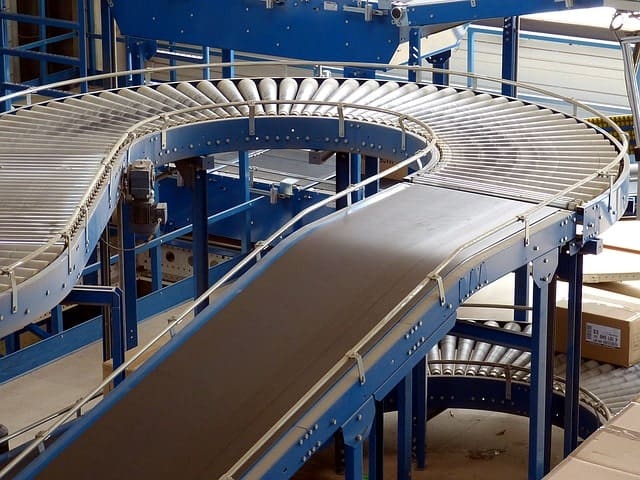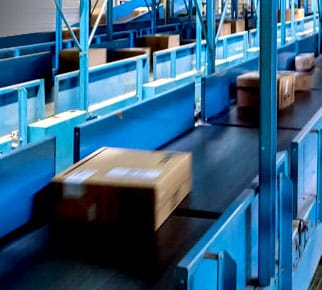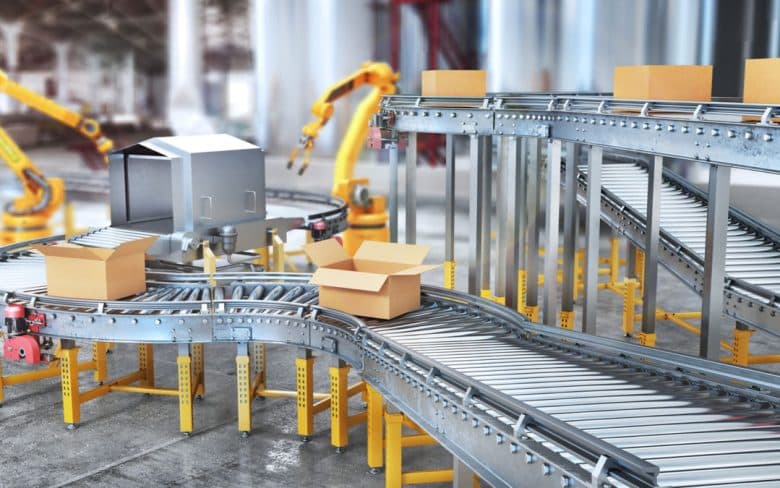A conveyor belt system moves various commodities between sites, including raw materials and completed goods.
Conveyors can transport things to their appropriate destination on the same floor or elsewhere in the facility. Material handling is made easier using industrial conveyor belt systems in warehouses, distribution centers, packing, and production and manufacturing. Learn more about the benefits of conveyors, Go To Fluent Conveyors →.
For firms that deal with raw materials, large items, bulk products, and sharp goods, conveyor belt systems have become necessary.
A Conveyor Belt System’s Operation and Components
A conveyor can be unmoving or mobile. Typically, a fixed conveyor is connected to ancillary equipment via peripheral components. It could be non-conveyor equipment or a conveyor system that already exists.
Portable conveyor systems are also available, which may be moved around conveniently. A mobile conveyor belt system is another name for a movable conveyor. It’s common in businesses like parcel delivery and logistics, where products are transported around floors and according to the amount of incoming material.
Portable conveyor systems can be altered to carry a variety of loads and transferred simply, making them indispensable in these industries.

What are the Components of a Conveyor Belt System
The following are the major components of a conveyor belt system:
Pulleys – The conveyor belt is pulled by two or more pulleys on a conveyor. The drive pulley, which is powered and drives or pulls the belt, is the major pulley.
The idler pulley is the other belt. This pulley serves a variety of purposes. It shifts the load transmission direction, picks up belt slack, or facilitates clutching.
Idler pulleys aren’t used for anything mechanical. Their primary job is to maintain the conveyor belt going and guide it around a bend.
The belt system’s movement is controlled by the driving and idler pulleys working together.
The noticeable element of the conveyor system that pushes the cargo along is the belt. In the conveyor system, the belt is extended over two or more pulleys. Around the pulleys, this component makes a closed and continuous loop.
The belt can revolve continually as it delivers and picks up materials for distribution to the desired location thanks to this configuration.
A driving unit is a component that allows the conveyor system to move. A counter-bearing component is included in this device, which ensures that all elements of the conveyor move smoothly. The driving unit allows the system to go forward or backward, depending on whether the conveyor is moving forward or backward.
The drive unit also allows the conveyor to adjust itself to direction change requirements as and when they arise. The driving unit of an automated conveyor belt system is driven by a motor. The drive unit in manually driven conveyor systems is not powered by a motor.
All conveyor belt systems contain the above components; however, the placement and material used for different conveyor designs may differ.
How can a Conveyor System operate?

The conveyor belt makes a closed-loop over the pulleys, allowing the system to move continuously. A rotor is used to power the belt and drive the pulley in most conveyor systems. Because of the friction between the rotor and the belt, the belt remains firmly attached to the rotor at all times.
To ensure smooth and effective belt movement, the idler and drive pulley are always maintained in the same direction – either clockwise or backward.
Conveyors used for groceries or moving walkways are typically straight in form.
A rotor or wheels are used in applications where the conveyor must turn around bends. This rotor or wheel helps the belt to travel through the bend without twisting.
Kinds of Conveyor Belt Systems
Manufacturers of belt conveyor systems create two sorts of systems. Described as the Belt systems for general material handling and bulk material handling.
1. General Material–Handling Belts – These belts are made up of two layers of material. The Cover is the outermost layer. The cover’s goal is to protect the Carcass, which is the inner layer.
The tensile strength of the conveyor belt is determined by the Carcass layer’s structure. When stress is applied to the belt, the Carcass functions by absorbing the force. The greater the Carcass’s tensile strength, the more efficient the belt is at moving materials that require more pushing force.
The Carcass’ design is determined by the belt’s materials. Steel cord belts, for example, have a Carcass formed of steel cables strung in a series throughout the belt. Rubber is used to cushion the cables. The Carcass uses fabric “mats” that are covered by layers of padding in fabric belts.
2. Bulk Material-Handling Belts – a conveyor system that is utilized in bulk material-focused sectors like processing facilities. Rubber, polyester, or neoprene are used to make these belts. These belts are made up of the same layers as regular belts.
In conclusion
Material transportation is made easier, faster, safer, and more efficient using a conveyor belt system. Material handling throughout production lines is made easier by well-designed conveyors.
Conveyor systems can help processes that use materials that are too bulky for individuals to handle. Manual handling can waste time, cause material damage, cause physical strain, and possibly result in injury. A conveyor system saves time and costs for organizations by automating material movement.
The material is chosen based on the materials that the conveyor will be handling. Rubber conveyor belt systems are used in industries such as milling and mining, which deal with big bulk commodities. Compared to general-purpose belts, bulk material-handling belts have distinct thicknesses and coating parameters.
When items need to be transferred across floors or numerous levels on the same floor, an inclined conveyor is an ideal option. It makes the task of transferring items up and down easier and faster.
Conveyor belt systems are a tremendous asset for organizations because of their efficiency in handling a wide range of company commodities, from raw materials to heavy end-products like vehicles. SRSI only works with world-class conveyor manufacturers to supply you with the highest quality products.
The Author
Jeremy Axel is the founder of Fluent Conveyors, they design and manufacture conveyors for Waste and recycling industries, Manufacturing, and Distribution centers across the United States. He is also known for building trusted relationships with conveyor dealers and reseller networks and developing advanced technological processes and tools that help them do their jobs more efficiently.












I like that you pointed out how portable conveyor systems can be altered to carry a variety of loads and transferred simply. I was watching a TV program the other day and saw a company using a rail to truck conveyor. It seems to be quite a convenient device to have, I’d probably use it too if I had a business that needed such functions.
Thanks for the clarification that conveyor belts operate in closed loops. I was wondering how factories are able to keep their products moving continuously. It makes sense that it would just loop itself to repeat the motions that products go through.